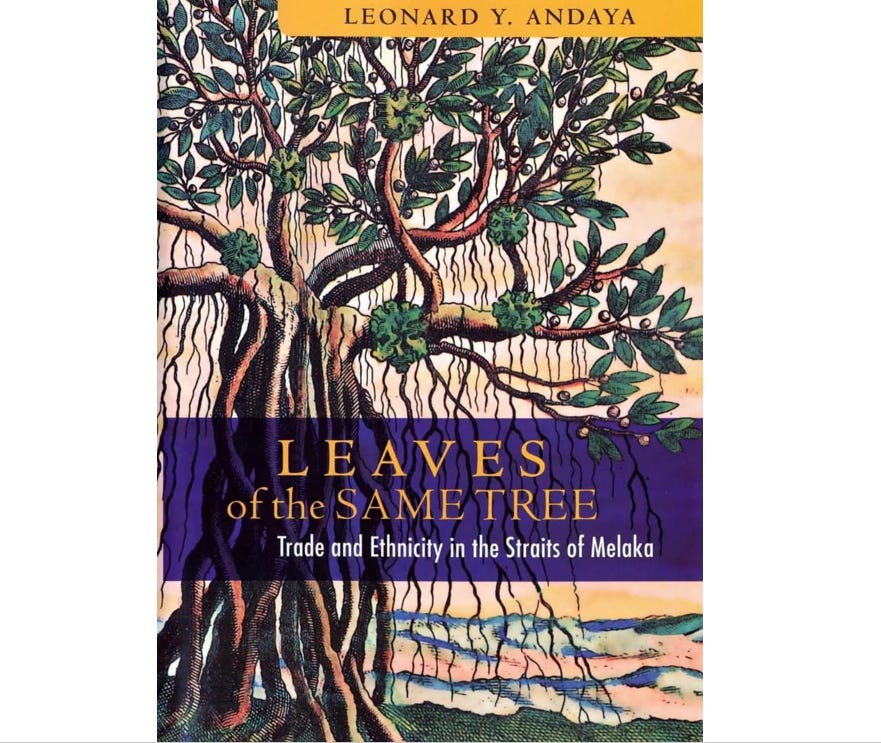Book Review: The Malay Mosaic - A Narrative of Ethnicity, Identity, and Adaptation
By Samirul Ariff Othman
Despite the astounding diversity of over a thousand ethnolinguistic groups across Southeast Asia, the rich tapestry of ethnicity in the region has been largely overlooked by historians. Yet, as "Leaves of the Same Tree" illustrates, ethnicity isn’t just an anthropological footnote—it’s a powerful lens through which we can analyze and understand the region’s history. By diving into the complexities of ethnic formation, particularly along the Straits of Melaka, the book reveals how trade, politics, and identity have been inextricably linked in shaping Southeast Asia’s past.
Take the Malays (or Melayu), for example. Their historical dominance in the region wasn’t just a story of cultural vibrancy but also of strategic ethnic engineering. By highlighting differences within their own community, the Malays set the stage for the emergence of distinct ethnic categories like the Minangkabau, Acehnese, and Batak. This deliberate "ethnicization" wasn’t merely a survival strategy but a way of consolidating influence and power amidst the region’s bustling international marketplace.
Fast-forward to today, and the Malays remain a fascinating case study in the blending of identities. Modern Malays can be broadly categorized into Melayu Jati (Native Malays) and Melayu Dagang (Foreign Malays). The Melayu Jati trace their cultural and historical roots directly to the Malay Peninsula, encompassing groups like the Kedahan, Kelantanese, and Bruneian Malays. Meanwhile, the Melayu Dagang reflect the region’s deep interconnectedness, encompassing migrants from Java, Sulawesi, and Sumatra who assimilated into Malay culture over centuries. These groups, from Bugis mercenaries to Minangkabau settlers, weren’t just passive participants in history —they actively shaped the region’s political and cultural landscape, from establishing the Selangor Sultanate to introducing Adat Perpatih, a matrilineal customary law, in Negeri Sembilan.
But here’s where it gets more intriguing: ethnicity in Southeast Asia isn’t static —it’s fluid, adaptable, and often a byproduct of larger forces. In the 19th century, as British colonialism reshaped the Malay Peninsula into an economic hub, waves of migrants from the broader Malay Archipelago arrived. Java, Sumatra, and Sulawesi sent traders and laborers who added new threads to the Malay identity. British census records initially separated these groups, but post-independence Malaysia fused them into a single “Malay” identity, reflecting decades of assimilation, intermarriage, and shared cultural narratives.
"Leaves of the Same Tree" challenges us to rethink how ethnicity evolves, not as an isolated artifact but as a living, breathing entity molded by trade, migration, and politics. It’s a creative, disruptive take on the historiography of Southeast Asia —one that questions what we think we know and opens up a world of new possibilities for understanding the dynamic interplay of identity and history in one of the world’s most culturally diverse regions. As we peel back the layers of the Malay identity, what emerges isn’t a monolith but a mosaic, shaped as much by trade winds and migration as by the forces of globalization and adaptation.
Samirul Ariff
Born in Jeddah, Saudi Arabia, Samirul Ariff was bathed in the Zam Zam Water, circumambulated around the Kaaba and placed near the Multazam. His early education spanned the Asia-Pacific region. He attended pre-school in Thailand and elementary school at St. Mary’s International School in Tokyo before continuing his studies at MARA Junior Science College (MRSM) in Malaysia.
Subscribe Below:




